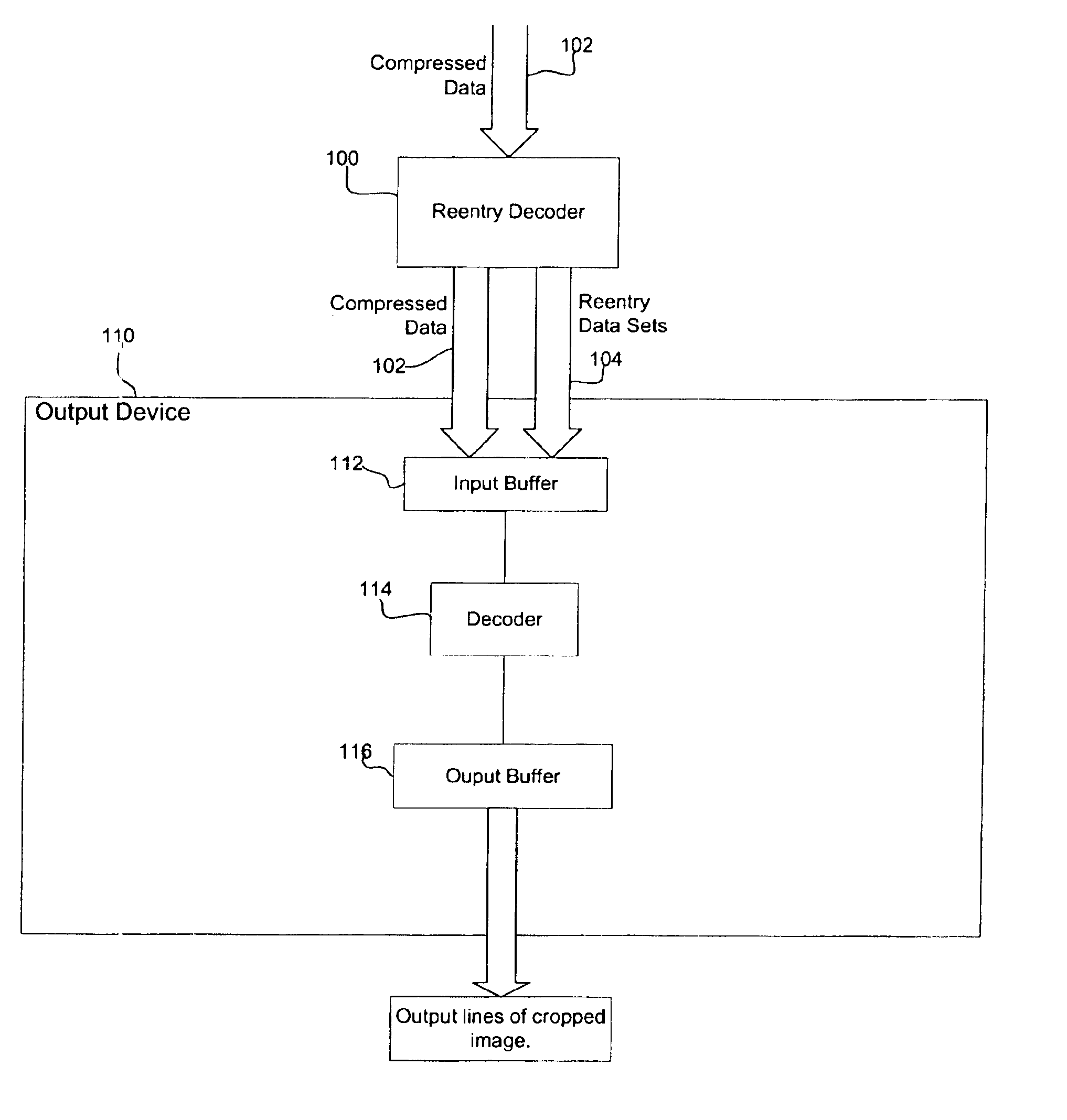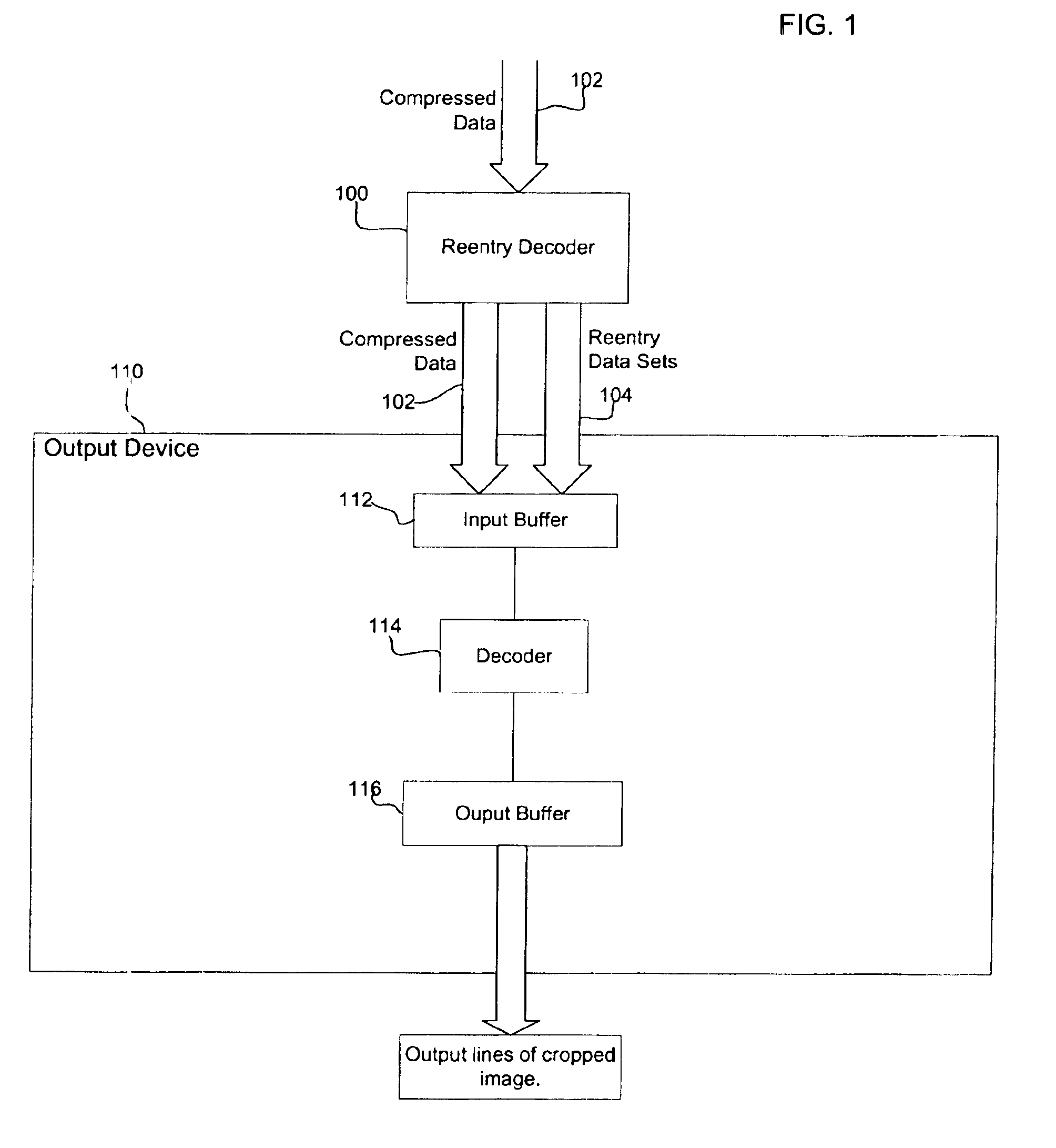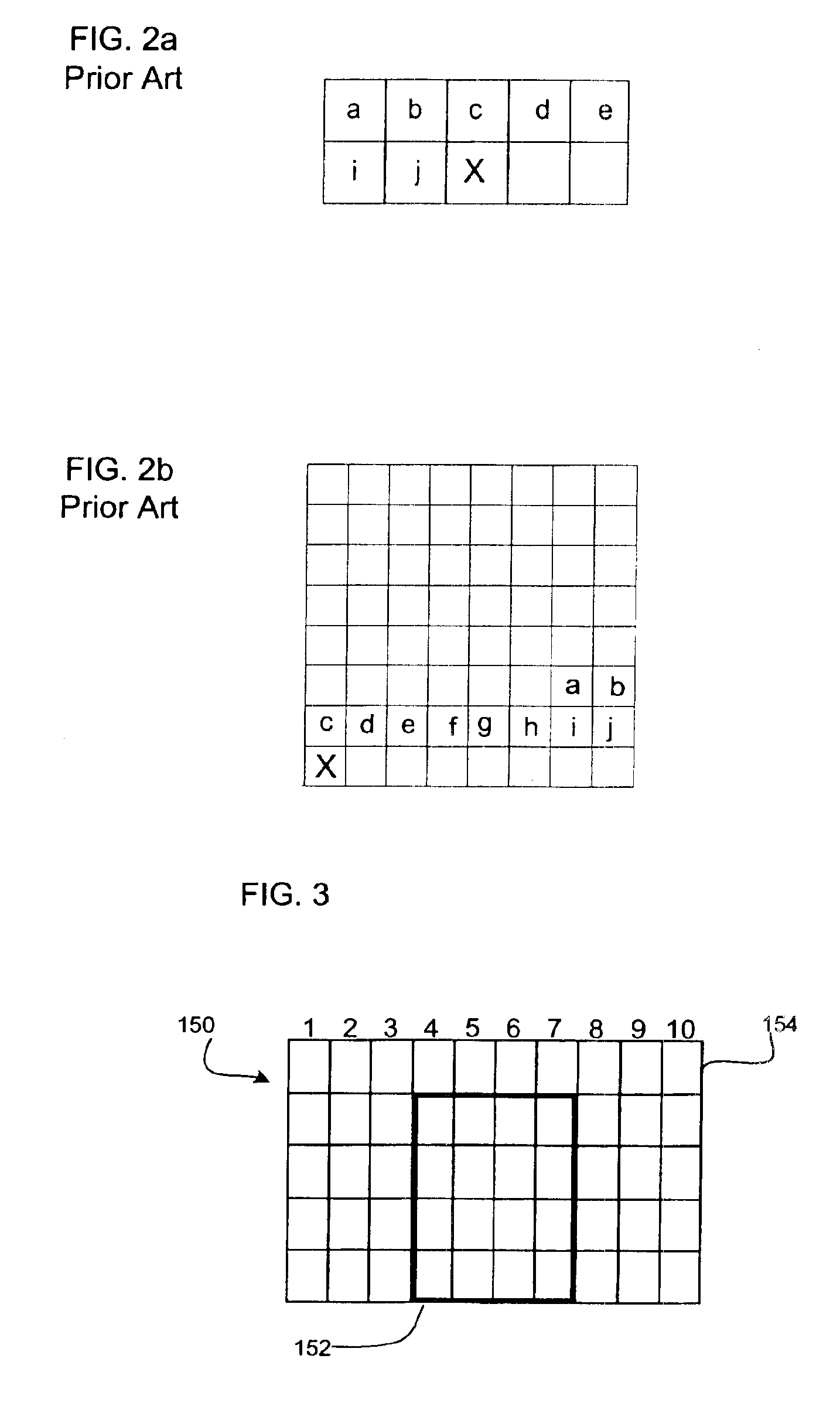Method, system, and program for decoding a section from compressed data
a compressed data and output technology, applied in the field of compressed data decoding methods, systems and programs, can solve the problem of not allowing anything but sequential decoding, and achieve the effect of reducing the time needed for decompression of an image section
- Summary
- Abstract
- Description
- Claims
- Application Information
AI Technical Summary
Benefits of technology
Problems solved by technology
Method used
Image
Examples
Embodiment Construction
Provided is a method, system, program, and data structure for decompressing a compressed data stream whose decoded output comprises lines of two-dimensional data. Received are a compressed data set, at least one pointer to a location in the compressed data stream whose decoded output comprises a location on a line of data, and decoding information for each received pointer that enables decoding from a point within the compressed data stream addressed by the pointer. For each received pointer, the following steps are performed: (i) accessing the location in the compressed data stream addressed by the pointer in the reentry data set; and (ii) using the decoding information in the reentry data set to decode compressed data from the accessed location.
Preferred embodiments provide a technique using reentry data sets to allow decoding of only a section of an image that a user wants to access. This is an improvement over prior art techniques that decode the entire compressed image in order...
PUM
 Login to View More
Login to View More Abstract
Description
Claims
Application Information
 Login to View More
Login to View More - R&D
- Intellectual Property
- Life Sciences
- Materials
- Tech Scout
- Unparalleled Data Quality
- Higher Quality Content
- 60% Fewer Hallucinations
Browse by: Latest US Patents, China's latest patents, Technical Efficacy Thesaurus, Application Domain, Technology Topic, Popular Technical Reports.
© 2025 PatSnap. All rights reserved.Legal|Privacy policy|Modern Slavery Act Transparency Statement|Sitemap|About US| Contact US: help@patsnap.com



